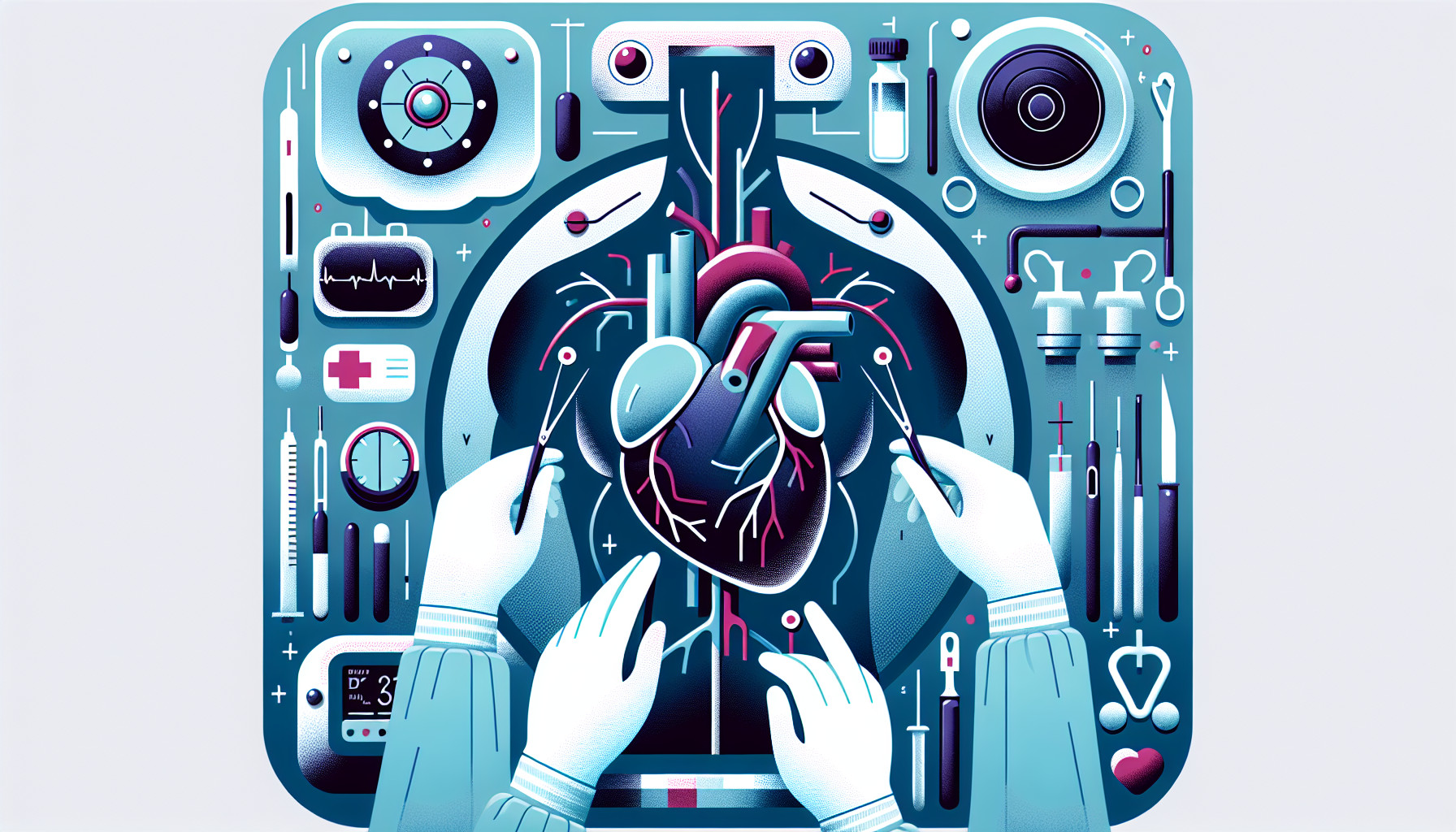Our Summary
Without the full text of the research paper, it’s challenging to provide a precise summary. However, given the keywords, we can infer that the paper likely discusses a procedure known as a coronary artery bypass. This is a type of heart surgery that helps improve blood flow to the heart.
The mammary arteries and the radial artery mentioned are often used in this procedure. The mammary arteries are located in the chest, while the radial artery is found in the forearm. Surgeons can take a section of these arteries and graft it to the heart to bypass a blocked or diseased coronary artery, creating a new route for blood to flow.
Again, without the full text, we can’t provide specifics about what the paper might reveal about this procedure, such as its effectiveness, risks, or other findings.
FAQs
- What is coronary artery bypass?
- What is the role of mammary arteries in coronary artery bypass?
- Can radial artery be used in coronary artery bypass?
Doctor’s Tip
One helpful tip a doctor might tell a patient about coronary artery bypass surgery is to follow a healthy lifestyle post-surgery, including maintaining a balanced diet, regular exercise, quitting smoking, and managing stress. These lifestyle changes can help improve the long-term success of the bypass procedure and reduce the risk of future heart problems.
Suitable For
Patients who are typically recommended for coronary artery bypass surgery are those who have severe coronary artery disease that cannot be effectively treated with medications, lifestyle changes, or less invasive procedures such as angioplasty and stenting. These patients may have significant blockages in multiple coronary arteries, leading to symptoms such as chest pain (angina) or shortness of breath. Additionally, patients with left main coronary artery disease, diabetes, or poor heart function may also be recommended for coronary artery bypass surgery. The decision to undergo bypass surgery is typically made by a team of healthcare providers, including cardiologists and cardiac surgeons, based on the individual patient’s medical history and overall health status.
Timeline
Before coronary artery bypass surgery:
- Patient undergoes diagnostic tests such as an electrocardiogram (ECG), stress test, and coronary angiography to determine the severity and location of blockages in the coronary arteries.
- Patient may be prescribed medications to manage symptoms and reduce the risk of complications.
- Patient may undergo cardiac rehabilitation to improve cardiovascular health and fitness before surgery.
After coronary artery bypass surgery:
- Patient is monitored closely in the intensive care unit (ICU) immediately after surgery to ensure stable vital signs and recovery from anesthesia.
- Patient may experience pain, fatigue, and difficulty breathing in the days following surgery, which are managed with medications and breathing exercises.
- Patient is gradually mobilized and encouraged to participate in physical therapy to regain strength and mobility.
- Patient receives education on cardiac rehabilitation, lifestyle changes, and medication management to prevent future heart problems.
- Patient undergoes follow-up appointments with cardiologists and surgeons to monitor recovery and assess the success of the surgery.
What to Ask Your Doctor
- What are the potential risks and complications of coronary artery bypass surgery?
- How long will the recovery process take and what can I expect during the recovery period?
- Will I need any follow-up appointments or tests after the surgery?
- Are there any lifestyle changes or medications I will need to take after the surgery?
- How long can I expect the results of the surgery to last?
- Are there any alternative treatment options to coronary artery bypass surgery that I should consider?
- How experienced are you in performing coronary artery bypass surgery?
- What is the success rate of this procedure at your facility?
- Will I need to make any changes to my diet or exercise routine after the surgery?
- How will the surgery impact my daily activities and overall quality of life?
Reference
Authors: Gaudino M, Lytle B. Journal: Circulation. 2022 Oct 25;146(17):1266-1267. doi: 10.1161/CIRCULATIONAHA.122.061766. Epub 2022 Oct 24. PMID: 36279413
